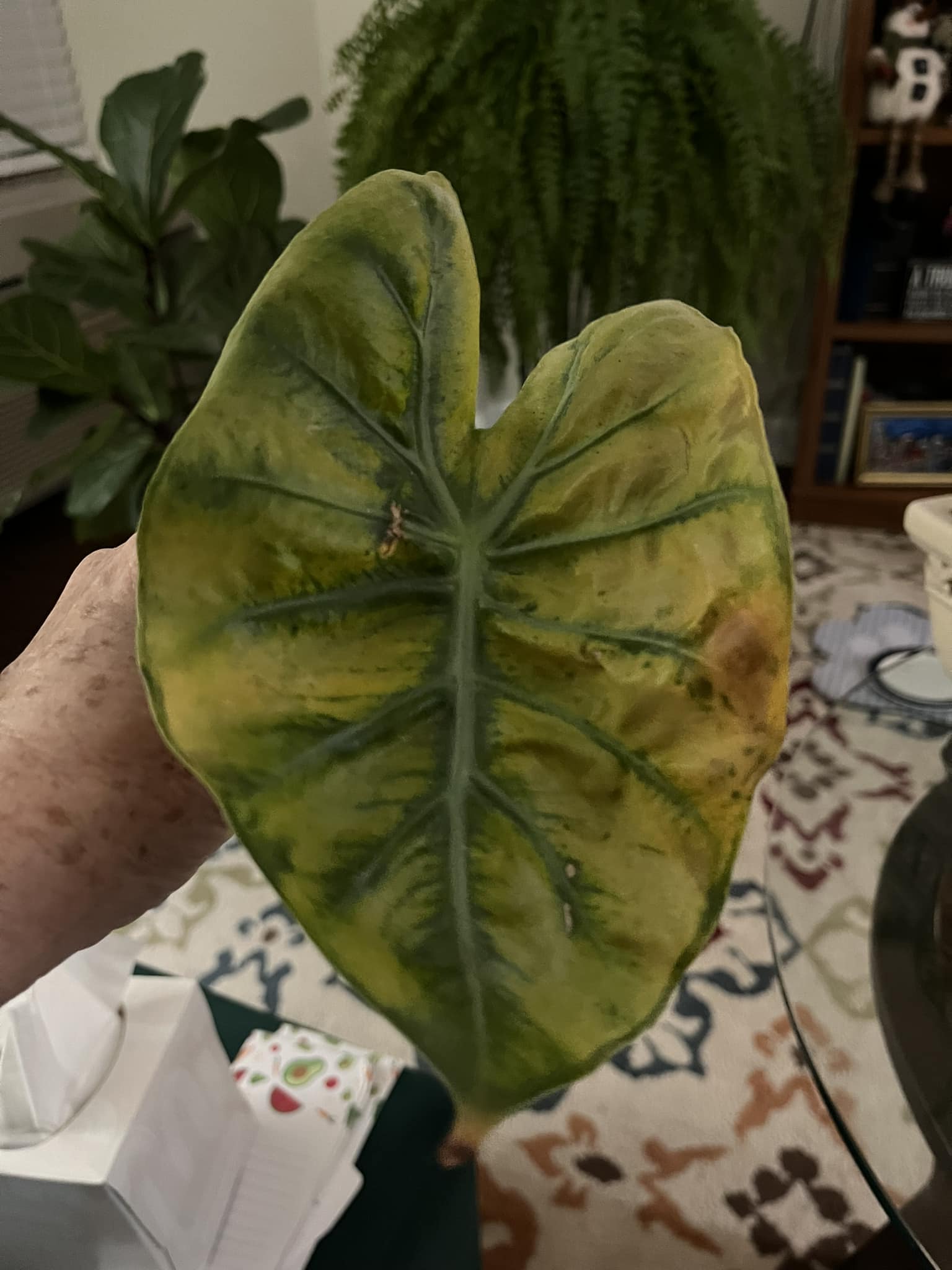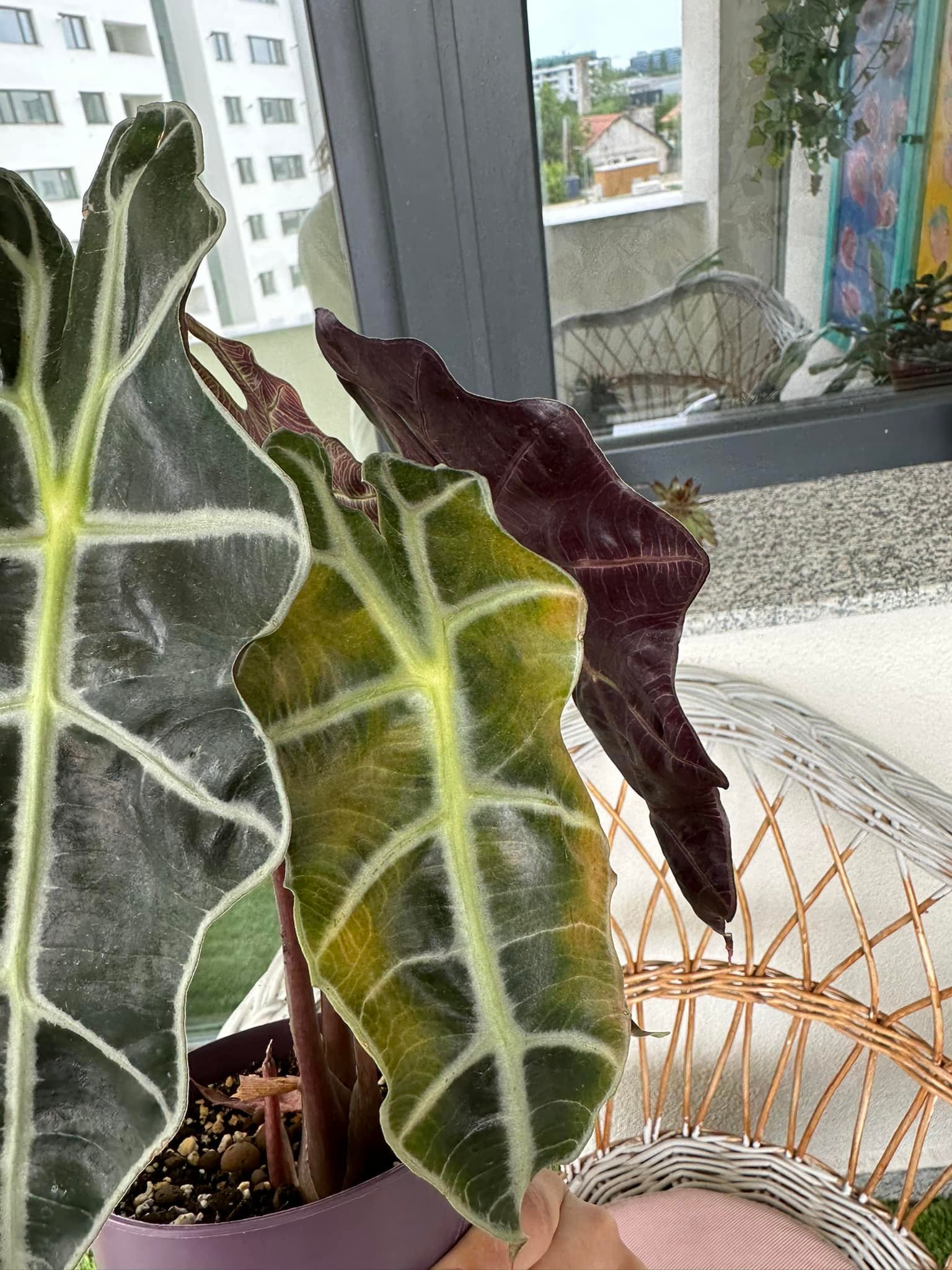
Alocasia plants are loved for their striking foliage and tropical aesthetic. However, if your Alocasia plant is turning yellow, it can be a cause for concern. Yellowing leaves can indicate a range of issues, from improper watering to pest infestations. The good news? Most of these problems can be resolved with the right care and attention.
In this guide, we’ll explore the most common reasons behind yellowing Alocasia leaves and provide quick and effective solutions to restore your plant’s health.
I’ve provided detailed information in the article below to help with your concerns, However, if you still have questions or need more help, feel free to share photos of your plants or describe your issue on our Facebook Group. Just join the group and leave a comment on the most recent post — either I or someone from the community will respond as soon as possible. We also share helpful and unique plant care tips daily, so consider joining the group to stay updated!
Common Causes of Yellowing Alocasia Leaves

1. Overwatering or Poor Drainage
One of the most frequent causes of yellowing leaves in Alocasia plants is overwatering. These tropical beauties thrive in well-draining soil, and excess water can lead to root rot, which in turn causes leaf discoloration.
When the roots sit in waterlogged soil for too long, they start to suffocate due to a lack of oxygen. This leads to root rot, a condition where the roots become mushy and black, unable to absorb nutrients properly. As a result, the leaves begin to yellow and wilt.
Signs of Overwatering:
- Yellow, mushy leaves
- Foul-smelling or soggy soil
- Wilting despite wet soil
- Black, decaying roots when examined
Quick Fix:
- Reduce watering frequency and ensure the top 2 inches of soil dry out between waterings.
- Repot the plant in well-draining soil and a pot with drainage holes.
- Remove any rotting roots and trim affected leaves.
2. Underwatering
On the flip side, too little water can also cause yellowing. Alocasia plants require consistent moisture but should never sit in standing water. If the soil remains dry for prolonged periods, the plant will struggle to absorb nutrients, leading to stress and yellowing leaves.
Signs of Underwatering:
- Dry, crispy leaves
- Drooping or curling foliage
- Soil pulling away from the edges of the pot
- Slow growth or no new leaves
Quick Fix:
- Water the plant thoroughly until water drains out of the bottom.
- Maintain a regular watering schedule, checking soil moisture frequently.
- Use a moisture meter if you’re unsure when to water.
3. Lack of Humidity
Alocasias are native to tropical regions and require high humidity levels to thrive. Dry indoor air, especially during winter months when heaters are running, can cause leaves to yellow and become crispy at the edges.
Signs of Low Humidity:
- Brown, dry leaf edges
- Slow growth
- Increased pest activity
- Leaves curling inward due to dehydration
Quick Fix:
- Place a humidity tray or pebble tray under the plant.
- Mist the leaves regularly (but avoid excessive misting).
- Use a humidifier to maintain humidity above 50%.
- Group Alocasia with other tropical plants to create a microclimate with higher humidity.
4. Inadequate Light
Alocasias prefer bright, indirect light. Too much direct sunlight can scorch the leaves, while too little light can lead to weak, yellowing foliage due to insufficient photosynthesis.
If the plant is exposed to direct sunlight for prolonged periods, the intense rays can cause leaf burn, turning parts of the leaves yellow or brown. Conversely, if the plant is kept in a dimly lit environment, it will struggle to produce energy, resulting in pale, yellow leaves.
Signs of Light Issues:
- Pale, faded leaves (too much light)
- Scorched or brown spots on leaves
- Stretching or leggy growth (too little light)
- New leaves emerging smaller than usual
Quick Fix:
- Move the plant to a spot with bright, indirect light.
- If natural light is insufficient, supplement with a grow light.
- Avoid placing the plant in direct sunlight for long periods.
5. Nutrient Deficiencies
A lack of essential nutrients, especially nitrogen, can lead to yellowing leaves and stunted growth. Alocasias need regular feeding to maintain their vibrant green color and healthy growth.
Nitrogen is crucial for leaf development, while other nutrients like magnesium and iron also play key roles in maintaining chlorophyll production. If your plant is lacking these nutrients, the leaves may start turning yellow from the bottom up.
Signs of Nutrient Deficiency:
- Slow growth
- Yellowing starting from the bottom leaves
- Leaves dropping prematurely
- Thin or weak stems
Quick Fix:
- Feed your Alocasia with a balanced, liquid fertilizer every 4–6 weeks during the growing season.
- Use a fertilizer with nitrogen, phosphorus, and potassium (NPK ratio of 10-10-10 or 20-20-20).
- Supplement with iron or magnesium if deficiency symptoms persist.
6. Pest Infestation
Common pests like spider mites, aphids, and mealybugs can cause damage that leads to yellowing leaves. These tiny invaders suck sap from the plant, weakening it and leading to discolored, distorted foliage.
Pests thrive in dry conditions, so low humidity can make your Alocasia more vulnerable to infestations.
Signs of Pest Infestation:
- Tiny webs or sticky residue on leaves
- Small holes or deformed foliage
- Visible pests on the undersides of leaves
- Leaves turning yellow and dropping suddenly
Quick Fix:
- Wipe the leaves with a damp cloth or insecticidal soap.
- Use neem oil as a natural deterrent.
- Introduce beneficial insects like ladybugs to control pest populations.
- Isolate the affected plant to prevent spreading to other houseplants.
7. Temperature Stress
Alocasia plants are sensitive to temperature fluctuations. Cold drafts, sudden temperature drops, or exposure to heating vents can stress the plant, leading to yellowing leaves.
Signs of Temperature Stress:
- Drooping or curling leaves
- Yellowing after moving the plant
- Wilting despite proper watering
Quick Fix:
- Keep the plant in a warm, stable environment (65–80°F or 18–27°C).
- Avoid placing the plant near air conditioners, heaters, or drafty windows.
- Use a thermometer to monitor temperature fluctuations in the plant’s location.
8. Natural Leaf Aging
Sometimes, yellowing leaves are simply a part of the plant’s natural cycle. Older leaves at the bottom will occasionally turn yellow and drop off to make room for new growth. This is a normal process and not a cause for concern.
Quick Fix:
- Trim off the yellowing leaves to encourage new growth.
- Focus on overall plant health rather than worrying about a single yellow leaf.
- Ensure the plant is receiving proper care to support continuous new leaf development.
How to Prevent Yellowing Leaves in the Future
To keep your Alocasia thriving and free from yellowing leaves, follow these best practices:
✅ Water Wisely: Keep soil moist but not soggy, and always use well-draining soil.
✅ Provide Optimal Light: Place your plant in bright, indirect light.
✅ Maintain Humidity: Use a humidifier or mist the plant to keep humidity levels high.
✅ Fertilize Regularly: Use a balanced fertilizer during the growing season.
✅ Inspect for Pests: Check your plant often and treat any infestations immediately.
✅ Monitor Temperature: Keep your plant away from extreme temperatures and drafts.
